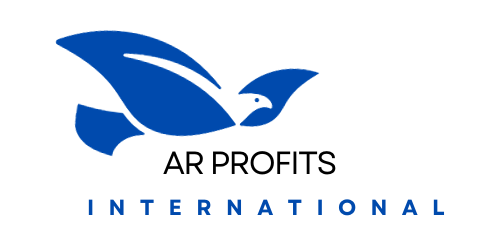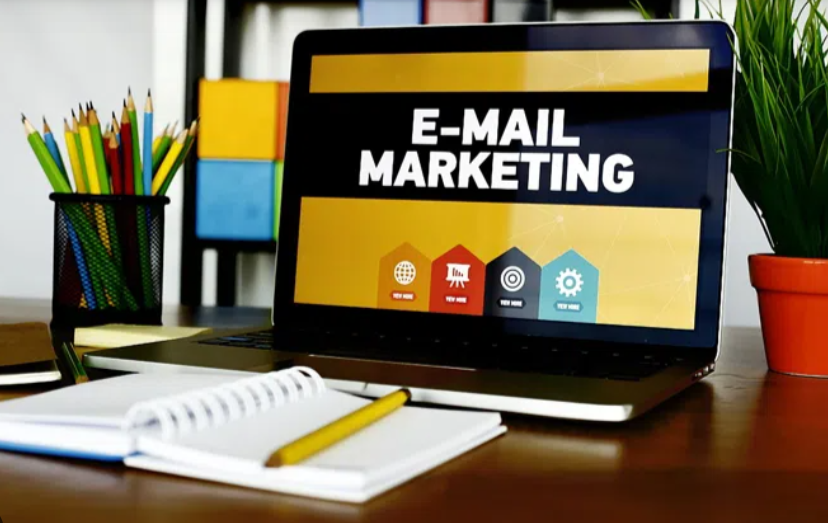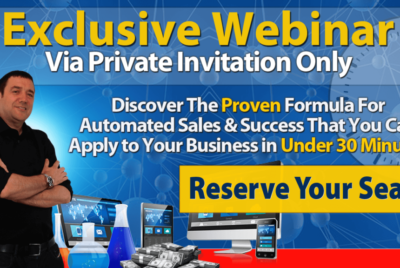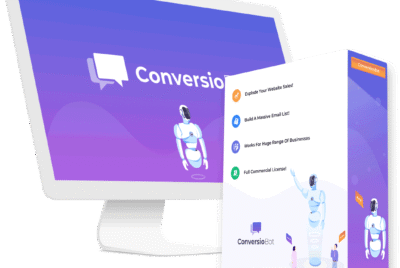E-mail Marketing – The Money is in the List: A Pathway to Online Income
Post Disclaimer
*We may earn a commission for purchases made using our links. Please see our disclaimer to learn more.*
Introduction
E-mail marketing is often hailed as one of the most effective ways to make money online. The phrase “the money is in the list” encapsulates the idea that a well-maintained email list can be a goldmine for generating income. In this article, we’ll explore how e-mail marketing works, why it’s so powerful, and how you can get started building and monetizing your email list.
1. Understanding E-mail Marketing
What is E-mail Marketing?
E-mail marketing involves sending commercial messages to a group of people using email. It’s a direct way to reach potential customers and build a relationship with your audience.
The Importance of E-mail Marketing
Unlike social media followers, an email list is something you own. It allows you to communicate directly with your audience without the interference of algorithms or platform changes.
2. Building Your E-mail List
2.1. Creating an Engaging Lead Magnet
Offer something valuable in exchange for email addresses. This could be a free ebook, a discount code, or access to exclusive content.
E-books and Guides E-books and comprehensive guides provide in-depth information on a topic of interest to your audience. They are perfect for educating and establishing authority in your niche.
Checklists and Cheat Sheets Checklists and cheat sheets offer quick, actionable insights that help your audience accomplish specific tasks. They are concise and easy to digest.
Templates and Worksheets Templates and worksheets are practical tools that assist your audience in implementing strategies or organizing their efforts. They add immediate value by simplifying complex processes.
Webinars and Video Tutorials Webinars and video tutorials provide visual and interactive learning experiences. They are effective for demonstrating expertise and building a connection with your audience.
Free Trials and Samples Offering free trials or samples of your products or services allows potential customers to experience their value firsthand, increasing the likelihood of conversion.
Identify Your Audience’s Needs Understand what your audience values and what challenges they face. Conduct surveys, engage in social media conversations, and analyze data to pinpoint their needs.
Offer Tangible Value Ensure that your lead magnet provides tangible value that addresses a specific problem or enhances your audience’s knowledge. It should be relevant, actionable, and beneficial.
Design for Appeal and Usability Create a visually appealing design that enhances readability and usability. Use clean layouts, engaging visuals, and clear calls-to-action to make your lead magnet attractive and easy to navigate.
2.1.1. Tools for Creating Lead Magnets
Canva Canva is an excellent tool for designing visually appealing e-books, checklists, templates, and more. It offers a wide range of templates and design elements that are easy to customize.
Google Docs and Google Sheets Google Docs and Sheets are versatile tools for creating text-based lead magnets like e-books, guides, checklists, and templates. They are easy to share and collaborate on.
Loom Loom is a powerful tool for creating video tutorials and screen recordings. It allows you to quickly create, edit, and share high-quality video content.
Adobe Spark Adobe Spark offers tools for creating professional-quality graphics, web pages, and video content. It’s user-friendly and provides a range of customization options.
Zoom and WebinarJam Zoom and WebinarJam are popular platforms for hosting live webinars and creating engaging video content. They offer features like screen sharing, live chat, and recording capabilities.
2.2. Promoting Your Lead Magnet
Landing Pages Create dedicated landing pages optimized for conversions. Include compelling headlines, clear descriptions of the lead magnet’s value, and an easy-to-use sign-up form.
Social Media Promote your lead magnet on social media platforms to reach a broader audience. Use engaging posts, stories, and ads to capture attention and drive traffic to your landing page.
Email Campaigns Nurture your subscribers with welcome E-mails and consistent communication.
Send a welcome email to new subscribers. This is your chance to make a great first impression and provide value right away. Regularly send valuable content to your subscribers to keep them engaged and build trust. This could include newsletters, updates, or personalized offers.
Leverage your existing email list to promote your new lead magnet. Send targeted emails highlighting the value of the lead magnet and encouraging subscribers to share it with their networks.
Partnerships and Collaborations Partner with influencers, bloggers, and other businesses to co-promote your lead magnet. Collaborations can help you tap into new audiences and increase your reach.
2.3. Crafting Compelling E-mails
2.3.1. Subject Lines that Capture Attention
Your subject line is the first impression your email makes on your recipient. It’s the deciding factor in whether your email gets opened or ignored. Here’s how to create subject lines that capture attention:
A. Characteristics of Effective Subject Lines
- Concise and Clear: Aim for subject lines that are short and to the point. Ideally, keep them under 50 characters.
- Compelling and Engaging: Use action words and create a sense of urgency or curiosity. For example, “Don’t Miss Out on This Exclusive Offer!” or “Unlock the Secrets to Better Health Today.”
- Personalization: Including the recipient’s name or specific details can increase open rates. For example, “John, Here’s Your Special Discount!”
- Relevance: Ensure the subject line is relevant to the content of the email. Misleading subject lines can lead to high unsubscribe rates.
- Avoid Spam Triggers: Avoid using all caps, excessive punctuation, and spammy words like “Free,” “Money,” or “Guarantee,” as these can trigger spam filters.
B. Examples of Effective Subject Lines
- “Your Weekly Update: New Trends and Insights”
- “Limited Time Offer: 20% Off All Products”
- “How to Boost Your Productivity in 5 Easy Steps”
- “Exclusive Access: Behind the Scenes of Our Latest Project”
- “You’re Invited: Join Our Free Webinar on Marketing Strategies”
2.3.2. Engaging Content
Provide content that is informative, entertaining and relevant to your audience. Use a conversational tone and personal pronouns to create a connection.
Once your email is opened, the content needs to captivate and retain your reader’s interest. Here’s how to craft engaging email content:
A. Know Your Audience
- Segmentation: Segment your email list based on demographics, behavior, and preferences to tailor your content to different audience groups.
- Relevance: Provide content that is relevant to the recipient’s interests and needs. Use data and insights to inform your content strategy.
B. Structure Your Email for Readability
- Clear and Concise: Use short paragraphs and bullet points to make your email easy to read. Avoid long blocks of text.
- Engaging Opening: Start with a compelling opening sentence that grabs the reader’s attention and encourages them to keep reading.
- Visuals: Incorporate images, GIFs, or videos to break up the text and make your email visually appealing.
- Call to Action (CTA): Include a clear and prominent CTA that tells the reader what action you want them to take. Use actionable language like “Shop Now,” “Learn More,” or “Download the Guide.”
C. Personalization and Customization
- Dynamic Content: Use dynamic content to personalize emails based on the recipient’s preferences, behavior, and past interactions.
- Personal Touch: Address the recipient by name and use personalized recommendations based on their previous activity.
D. Value-Driven Content
- Educational: Provide valuable information, tips, and insights that help your audience solve problems or achieve their goals.
- Entertaining: Add an element of entertainment, such as a funny anecdote, an interesting story, or an engaging quiz.
- Exclusive Offers: Offer exclusive deals, discounts, or early access to products/services to create a sense of exclusivity and reward loyal subscribers.
E. Testing and Optimization
- A/B Testing: Test different subject lines, email formats, and CTAs to see what resonates best with your audience.
- Analytics: Use email analytics to track open rates, click-through rates, and conversions. Analyze the data to identify areas for improvement.
- Feedback: Encourage feedback from your subscribers and use it to refine your email marketing strategy.
2.3.3. Segmentation and Personalization
- Segmenting Your List Divide your email list into smaller segments based on demographics, behavior or preferences. This allows for more targeted and relevant messaging.
- Personalized E-mails Use personalization techniques such as addressing subscribers by their first name and tailoring content to their interests.
2.4. Monetizing Your E-mail List
- Affiliate Marketing Promote products or services from other companies and earn a commission for each sale made through your referral link.
- Selling Your Own Products Use your email list to promote and sell your own products or services, whether digital or physical.
- Sponsored E-mails Partner with brands to send sponsored emails to your list. This can be a lucrative way to monetize your audience.
2.5. Analyzing and Optimizing Your Campaigns
- Tracking Performance Metrics Monitor open rates, click-through rates, and conversion rates to measure the success of your campaigns.
- A/B Testing Test different elements of your emails, such as subject lines, images and calls-to-action to see what resonates best with your audience.
2.6. Ensuring Compliance with E-mail Marketing Laws
- Understanding Regulations Familiarize yourself with laws such as the CAN-SPAM Act and GDPR to ensure your email marketing practices are compliant.
- Opt-In and Opt-Out Processes Make it easy for subscribers to opt in to your list and provide clear instructions for opting out if they choose to do so.
2.7. Overcoming Common E-mail Marketing Challenges
2.7.1. Avoiding Spam Filters
Understanding Spam Filters
Spam filters are automated systems that email providers use to identify and block unsolicited or harmful emails. These filters examine various aspects of an email, including its content, sender reputation, and engagement metrics, to determine whether it should be delivered to the recipient’s inbox or marked as spam.
Best Practices to Avoid Spam Filters
- Use a Reputable Email Service Provider (ESP)
- Choose an ESP , for example GETRESPONSE known for high deliverability rates. Reputable ESPs often have established relationships with email providers, which can help ensure your emails reach the inbox.
- Authenticate Your Emails
- Implement authentication protocols like SPF (Sender Policy Framework), DKIM (DomainKeys Identified Mail), and DMARC (Domain-based Message Authentication, Reporting & Conformance). These protocols verify that your emails are legitimate and sent from your domain.
- Craft Clean and Relevant Subject Lines
- Avoid using all caps, excessive punctuation (e.g., !!!), and spammy words like “Free,” “Buy Now,” or “Guaranteed.” Instead, create concise and relevant subject lines that accurately reflect the content of your email.
- Optimize Your Email Content
- Avoid excessive use of images and ensure a good text-to-image ratio. Use alt text for images, as some spam filters can’t read images and may flag emails with too many images.
- Ensure your content is relevant and valuable to your audience. Avoid using words or phrases commonly associated with spam.
- Include a Clear Unsubscribe Option
- Always include a visible and easy-to-use unsubscribe link in your emails. This not only complies with regulations but also helps maintain a positive sender reputation.
- Personalize Your Emails
- Use the recipient’s name and tailor the content to their interests and preferences. Personalized emails are more likely to engage recipients and less likely to be marked as spam.
- Monitor Your Sender Reputation
- Regularly check your sender reputation using tools like SenderScore. A good reputation indicates to email providers that you’re a trustworthy sender, improving your chances of inbox placement.
2.7.2. Maintaining List Health
Why List Health Matters
A healthy email list is essential for successful email marketing. A well-maintained list ensures higher engagement rates, better deliverability, and a positive sender reputation. Here’s how to maintain list health effectively:
Best Practices to Maintain List Health
- Regularly Clean Your List
- Remove inactive subscribers who haven’t engaged with your emails in a long time. This can improve your open and click-through rates and reduce the risk of being marked as spam.
- Use Double Opt-In
- Implement a double opt-in process where subscribers confirm their email address by clicking a link in a confirmation email. This ensures you’re adding genuinely interested and valid email addresses to your list.
- Segment Your Audience
- Segment your email list based on demographics, behavior, purchase history, and engagement levels. This allows you to send more targeted and relevant emails, improving engagement rates and reducing unsubscribe rates.
- Monitor Engagement Metrics
- Keep an eye on key metrics like open rates, click-through rates, bounce rates, and unsubscribe rates. Low engagement can indicate issues with your email content or list quality that need to be addressed.
- Re-Engage Inactive Subscribers
- Run re-engagement campaigns to win back inactive subscribers. Offer them exclusive content, discounts, or simply ask for their feedback to understand why they’ve disengaged.
- Remove Hard Bounces
- Immediately remove email addresses that result in hard bounces (permanent delivery failures). Continuing to send emails to these addresses can harm your sender reputation.
- Ensure Compliance with Regulations
- Adhere to regulations like the CAN-SPAM Act, GDPR, and CASL. This includes obtaining explicit consent to email subscribers, providing a clear unsubscribe option, and respecting opt-out requests promptly.
2.8. Case Studies and Success Stories
2.8.1. Examples of Successful E-mail Campaigns and Lessons Learned
One of the most effective ways to understand and improve your email marketing efforts is by studying successful email campaigns from other businesses. These case studies and success stories provide valuable insights into what works and why. Let’s dive into some real-world examples of successful email campaigns and the lessons learned from each of them.
1. Airbnb: Personalization and Storytelling
Campaign Overview Airbnb excels at personalization and storytelling in their email marketing. They send personalized travel recommendations based on user behavior and preferences, accompanied by high-quality images and compelling narratives about destinations.
Key Elements
- Personalization: Emails are tailored to the recipient’s past bookings and search history.
- Engaging Content: Storytelling elements make the emails more relatable and engaging.
- Visual Appeal: High-quality images and a clean layout enhance visual appeal.
Lessons Learned
- Leverage Data for Personalization: Use customer data to send relevant and personalized content.
- Tell a Story: Craft narratives that resonate with your audience and evoke emotions.
- Focus on Visuals: Invest in high-quality visuals to make your emails more attractive and engaging.
2. Spotify: Re-engagement Campaign
Campaign Overview Spotify’s re-engagement campaign aimed to win back inactive users by reminding them of the value of their service. They sent personalized emails highlighting users’ favorite playlists and new music recommendations.
Key Elements
- Personalization: Emails featured users’ favorite playlists and tailored music recommendations.
- Clear Call-to-Action: Encouraged users to return and listen to their favorite tracks.
- Urgency: Included time-sensitive offers, such as a free trial for premium membership.
Lessons Learned
- Address Inactive Users: Identify inactive subscribers and create targeted campaigns to re-engage them.
- Highlight Value: Remind users of the value they can get from your service.
- Create Urgency: Use time-sensitive offers to prompt immediate action.
3. Amazon: Product Recommendations
Campaign Overview Amazon is known for its highly effective product recommendation emails. They send personalized emails suggesting products based on users’ browsing and purchase history.
Key Elements
- Data-Driven Personalization: Recommendations are based on detailed user data.
- Clear and Concise: Emails are straightforward, focusing on product images and brief descriptions.
- Cross-Selling: Suggest complementary products to items users have viewed or purchased.
Lessons Learned
- Utilize User Data: Use browsing and purchase history to send relevant product recommendations.
- Keep It Simple: Focus on clear and concise messaging that highlights key products.
- Implement Cross-Selling: Suggest complementary products to increase sales and average order value.
4. Dropbox: Referral Program
Campaign Overview Dropbox’s referral program email campaign encouraged users to refer friends in exchange for additional storage space. The campaign was simple yet highly effective.
Key Elements
- Incentives: Offered additional storage space as an incentive for referrals.
- Easy to Understand: Clear instructions on how to refer friends and claim rewards.
- Social Proof: Highlighted the benefits of Dropbox through testimonials and success stories.
Lessons Learned
- Offer Incentives: Provide attractive rewards to encourage referrals and user engagement.
- Simplify the Process: Make it easy for users to understand and participate in the referral program.
- Use Social Proof: Include testimonials and success stories to build trust and credibility.
5. Uber: Welcome Email Series
Campaign Overview Uber’s welcome email series for new users was designed to introduce them to the service and encourage their first ride. The series included a welcome message, a guide on how to use the app, and a discount offer for the first ride.
Key Elements
- Warm Welcome: Personal and welcoming tone in the first email.
- Educational Content: Provided a guide on how to use the Uber app.
- Discount Offers: Included a discount code to incentivize the first ride.
Lessons Learned
- Onboard New Users: Use a welcome email series to introduce new users to your service.
- Educate: Provide clear instructions and educational content to help users get started.
- Offer Incentives: Include a discount or special offer to encourage the first use or purchase.
Conclusion
E-mail marketing is a powerful tool for generating online income, but it requires strategy and dedication. By building a quality email list, nurturing your subscribers and consistently providing value, you can unlock the potential of email marketing and turn your list into a reliable source of revenue.
FAQs:
1. How often should I send emails to my subscribers?
It’s essential to find a balance that keeps your audience engaged without overwhelming them. Generally, sending one to two emails per week is a good starting point.
2. What types of content should I include in my emails?
Provide a mix of valuable content such as tips, industry news, personal stories, product recommendations and exclusive offers.
3. How can I grow my email list quickly?
Use lead magnets, social media promotions and collaborations with other businesses to attract new subscribers.
4. What is the best way to avoid my emails ending up in spam folders?
Ensure your emails comply with spam regulations, use a reputable email service provider and avoid spammy language and excessive punctuation.
5. Can I purchase an email list to get started quickly?
No, purchasing email lists is not recommended as it can lead to low engagement rates, legal issues, and damage to your sender reputation. Focus on growing your list organically for the best results.




